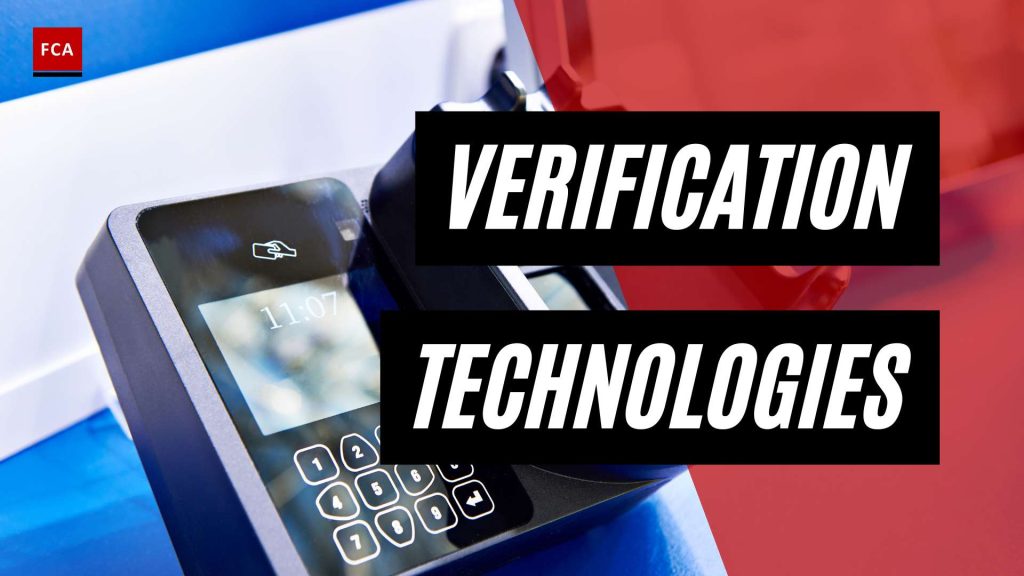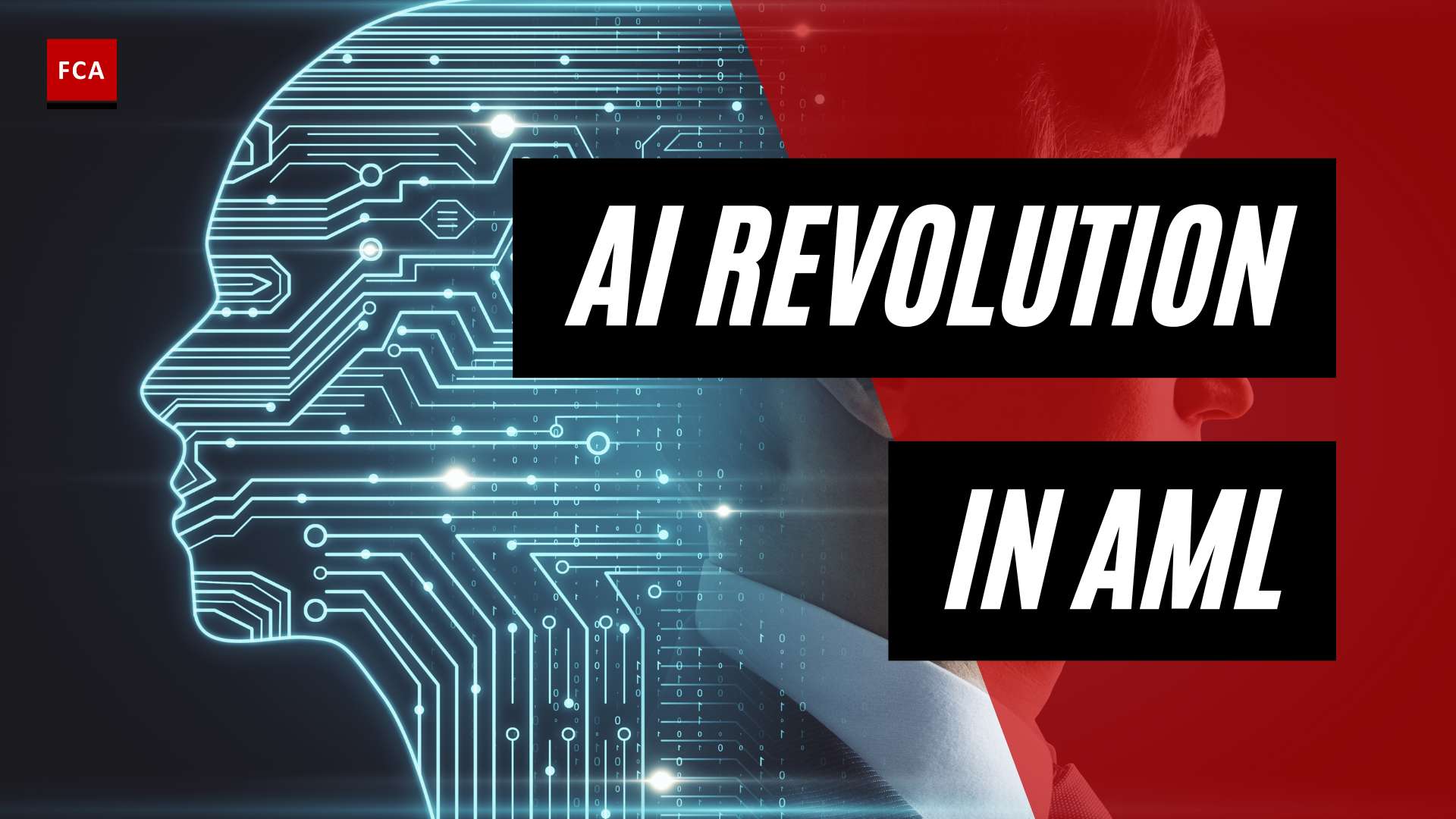Introduction to Biometric Verification Technologies
Biometric verification technologies play a crucial role in enhancing security and authentication processes across various industries. By leveraging unique physical or behavioral characteristics, these technologies provide a robust and reliable method for verifying individual identities and preventing fraudulent activities. In this section, we will explore what biometric verification technologies are and highlight their importance in Anti-Money Laundering (AML) efforts.
What are Biometric Verification Technologies?
Biometric verification technologies refer to the use of an individual’s distinctive physical or behavioral traits, such as fingerprints, facial features, voice, iris patterns, or palm and finger vein patterns, to verify their identity. These unique biometric identifiers are captured and stored in a database, allowing for comparison and authentication when an individual attempts to access a system or data. Biometric verification technologies offer a more secure and convenient alternative to traditional password-based authentication methods.
The most common types of biometric verification technologies include:
- Facial Recognition: Analyzing facial features to identify individuals.
- Fingerprint Scanning: Capturing and analyzing unique fingerprint patterns.
- Voice Recognition: Verifying an individual’s identity based on their voice characteristics.
- Iris Recognition: Analyzing the intricate patterns in the iris of the eye.
- Palm and Finger Vein Patterns: Capturing and analyzing vein patterns in the palm or fingers.
These technologies have gained significant traction in recent years due to their accuracy and reliability in verifying identities, as well as their potential for integration with various systems and devices.
Importance of Biometric Verification in AML
Biometric verification plays a vital role in Anti-Money Laundering (AML) efforts. AML regulations require financial institutions and other regulated entities to implement robust customer identification and verification procedures to detect and prevent money laundering activities. Biometric verification technologies provide an effective means to strengthen these procedures, ensuring that the true identities of customers are accurately established and verified.
By leveraging biometric verification, organizations can enhance the security of their AML processes. Biometric identifiers are unique to individuals and significantly more difficult to forge or manipulate compared to traditional identification methods. This reduces the risk of identity theft, impersonation, and fraudulent activities.
Furthermore, biometric verification technologies offer a seamless and user-friendly experience for customers during the onboarding and authentication processes. Instead of relying on cumbersome and easily compromised methods such as passwords or PINs, individuals can simply use their biometric traits to verify their identity. This improves convenience and reduces the potential for human error or social engineering attacks.
In the context of AML, biometric verification technologies enable financial institutions to establish a robust and compliant customer identification program. By accurately verifying customer identities, organizations can better detect and mitigate risks associated with money laundering, terrorist financing, and other illicit activities.
As we delve further into the topic, we will explore the various types of biometric verification technologies, their benefits, challenges, and real-world applications in different industries. Stay tuned to discover the potential of these technologies in enhancing security and authentication processes.
Types of Biometric Verification Technologies
Biometric verification technologies offer a range of methods for accurately identifying individuals based on their unique biological characteristics. Here are the five most common types of biometric verification technologies:
Facial Recognition
Facial recognition technology has gained significant popularity in recent years. It involves capturing a person’s face through a smartphone camera or other imaging devices to confirm their identity based on facial geometry and measurements. During the enrollment process, the user’s facial features are typically uploaded to a platform for future reference. Facial recognition simplifies identity authentication processes and is widely used in various industries, including biometric identity management and biometric identity verification (ABI Research).
Fingerprint Scanning
Fingerprint scanning is one of the oldest and most widely recognized forms of biometric verification. It involves capturing the unique patterns on an individual’s fingertips and using them to authenticate their identity. Fingerprint scanning can be used as the sole biometric identifier or as an additional security layer. However, when used remotely, capturing a “3D” fingerprint through a photograph can lead to misalignment with the biometric engine, causing errors that require innovative solutions for compatibility with existing registries (ABI Research).
Voice Recognition
Voice recognition technology verifies identities based on the sound of an individual’s voice. It provides a highly secure and user-friendly method for authentication in various applications, including e-commerce and banking. The uniqueness of the voice makes it difficult to mimic, reducing the risk of cyber threats. Voice recognition technology analyzes different voice characteristics, such as pitch, tone, and pronunciation, to confirm an individual’s identity.
Iris Recognition
Iris recognition is one of the most accurate biometric authentication methods. It involves capturing and analyzing the patterns of the iris, the colored ring-shaped part of the eye. Iris recognition systems locate the pupil, iris, and eyelids, converting the iris image into numerical values for comparison with stored data. This technology offers high accuracy and is widely used in various applications where reliability is crucial.
Palm and Finger Vein Patterns
Palm and finger vein patterns are becoming increasingly popular for biometric verification. These technologies analyze the unique patterns of veins beneath the skin’s surface in the palm or fingers. The veins serve as an individual’s unique identifier and can be used for secure authentication. Palm and finger vein patterns offer a highly accurate and contactless method of verification, making them suitable for diverse applications across industries.
By leveraging these biometric verification technologies, organizations can enhance security, streamline processes, and ensure accurate identification. Each technology has its own advantages and considerations, and their effectiveness may vary depending on the specific use case and implementation.
Benefits and Advantages of Biometric Verification Technologies
Biometric verification technologies offer numerous benefits and advantages, making them a valuable tool in various industries, including anti-money laundering (AML), biometric identity management, and biometric identity verification. Let’s explore some of the key advantages:
Enhanced Security and Fraud Prevention
One of the primary benefits of biometric verification technologies is enhanced security and fraud prevention. Biometric authentication systems provide a higher level of security compared to traditional authentication methods such as passwords or PINs. By utilizing unique physiological or behavioral traits like facial features, fingerprints, voice, or iris patterns, biometric systems create a strong layer of security that is difficult to replicate or forge.
The use of biometrics significantly reduces the risk of identity theft and fraud, as these traits are unique to each individual. According to ABI Research, biometric authentication, including facial recognition, fingerprint scanning, and voice recognition, is crucial in preventing cybercrime and protecting citizens’ credentials, particularly in government-issued documents like national ID cards, passports, and driver’s licenses.
Convenience and User Experience Improvement
In addition to enhanced security, biometric verification technologies offer convenience and improve the user experience. Traditional authentication methods often require users to remember and enter passwords or PINs, which can be cumbersome and prone to human error. Biometric authentication eliminates the need for users to remember complex passwords, simplifying the authentication process.
The integration of biometric technologies into smart devices, such as smartphones and tablets, has made authentication more seamless and user-friendly. Users can unlock their devices, access applications, and authorize transactions with a simple touch, scan, or voice command. This convenience not only saves time but also improves the overall user experience.
Integration into Smart Devices
Biometric verification technologies have seamlessly integrated into smart devices, revolutionizing the way we interact with technology. Devices such as smartphones, tablets, and laptops now come equipped with built-in biometric sensors, like fingerprint scanners or facial recognition cameras.
This integration allows users to unlock their devices, authorize payments, and access sensitive information securely and effortlessly. The biometric data is stored locally on the device, ensuring privacy and reducing the risk of data breaches. Biometric authentication on smart devices also enables secure mobile banking, e-commerce transactions, and access to personalized services.
The advantages of biometric verification technologies, including enhanced security, convenience, and integration into smart devices, have contributed to their increasing adoption in various industries, including healthcare, banking and finance, and border security. These technologies offer a reliable and efficient solution for identity authentication while protecting against fraud and unauthorized access.
Considerations and Challenges of Biometric Verification Technologies
Implementing biometric verification technologies brings numerous benefits, but it also poses considerations and challenges that organizations need to address. Three key areas of concern include privacy concerns and data security, false positives and accuracy, and compliance with data protection regulations.
Privacy Concerns and Data Security
Biometric systems collect unique personal characteristics, such as facial information, fingerprints, iris scans, and palm or finger vein patterns. The covert collection and use of biometric data without individuals’ knowledge or consent raise privacy concerns. There is a risk that biometric traits collected for one purpose could be used for unrelated purposes, potentially leading to cross-matching of biometric data. Additionally, biometric systems may inadvertently reveal secondary information beyond the scope of the initial purpose, raising concerns about the collection of personal information beyond what was intended (Privacy Commissioner of Canada).
To address these concerns, companies investing in biometric verification technologies prioritize data security and privacy. Encrypted storage solutions and privacy-centric systems help safeguard sensitive biometric data. Compliance with data protection regulations, such as the General Data Protection Regulation (GDPR) in Europe, is crucial to ensure responsible handling of biometric information and to address ethical considerations related to consent and individual rights over personal biometric data.
False Positives and Accuracy
Achieving high accuracy in biometric verification is essential for reliable identification and authentication. False positives, where the system incorrectly matches an individual to another person’s biometric data, can lead to security vulnerabilities. False positives can occur due to factors such as variations in biometric data caused by changes in lighting conditions, aging, or variations in capturing techniques.
To enhance accuracy, biometric verification technologies continuously evolve and incorporate advancements. For example, the adoption of 3D facial recognition technology in smartphones demonstrates ongoing efforts to improve accuracy and reliability (LinkedIn). Companies invest in research and development to minimize false positives, ensuring robust and dependable biometric verification systems.
Compliance with Data Protection Regulations
The utilization of biometric verification technologies requires compliance with data protection regulations. Organizations must ensure that the implementation and operation of biometric systems align with relevant regulations, such as GDPR. Compliance involves obtaining necessary consent, being transparent about data usage, and providing individuals with control over their biometric data.
By adhering to data protection regulations, organizations demonstrate their commitment to responsible and ethical use of biometric information. Compliance not only safeguards individuals’ rights but also builds trust and confidence in the use of biometric verification technologies.
Addressing privacy concerns, ensuring accuracy, and complying with data protection regulations are crucial considerations for organizations adopting biometric verification technologies. By proactively addressing these challenges, organizations can leverage the benefits of biometric verification while protecting individuals’ privacy, maintaining accuracy, and meeting regulatory requirements.
Biometric Verification Technologies in Various Industries
Biometric verification technologies are being widely adopted across various industries, offering enhanced security and more efficient authentication methods. Let’s explore how these technologies are being utilized in the healthcare, banking and finance, and border security sectors.
Healthcare
In the healthcare industry, biometric verification technologies are playing a crucial role in enhancing patient identification, reducing medical identity theft, and improving the accuracy of electronic health records. By implementing technologies such as fingerprint scanning and facial recognition, healthcare providers can efficiently and securely access patient records, improving the overall quality of care. This ensures that the right patient receives the right treatment, reducing errors and improving patient safety. Biometric verification technologies are also instrumental in streamlining access to healthcare facilities and securely managing patient information (Aware).
Banking and Finance
The banking and finance sector is revolutionized by the adoption of biometric verification technologies, particularly facial recognition. These technologies provide secure and convenient authentication methods for accessing bank accounts and making transactions. Biometric verification ensures strong customer authentication, minimizing the risk of fraud and identity theft. By replacing traditional passwords and PINs with biometric authentication, banks can significantly enhance the security of customer accounts while improving the customer experience. Biometric verification technologies are also being integrated into mobile banking apps and ATMs, providing users with seamless and secure access to their financial services (Aware).
Border Security
Biometric verification technologies play a vital role in border security applications, providing efficient and accurate identification of travelers. Technologies such as fingerprint scanning, iris recognition, and facial recognition are used to verify the identity of individuals at various points of entry. These technologies enhance security measures and enable border control agencies to effectively screen and identify potential threats. By quickly and accurately verifying the identity of travelers, border security personnel can facilitate safe and efficient movement across borders. Biometric verification technologies have become integral to border security systems worldwide, ensuring the integrity of national borders (Aware).
The adoption of biometric verification technologies in healthcare, banking and finance, and border security industries demonstrates the significant impact these technologies have on enhancing security, improving efficiency, and protecting sensitive information. As technology continues to advance, biometric verification is expected to play an even more prominent role in various industries, ensuring secure and seamless user authentication.
Future Trends and Innovations in Biometric Verification Technologies
As biometric verification technologies continue to evolve, various trends and innovations are shaping the future of this field. These advancements aim to enhance the effectiveness, accuracy, and security of biometric systems. In this section, we will explore three key areas of innovation: the integration of AI and Machine Learning, advancements in facial recognition technology, and the focus on user consent and control over biometric data.
Integration of AI and Machine Learning
Companies are actively integrating Artificial Intelligence (AI) and Machine Learning (ML) algorithms into biometric systems, revolutionizing the way these technologies operate. This integration allows for improved performance, accuracy, and security in biometric verification processes. AI and ML algorithms can analyze vast amounts of data, recognize patterns, and adapt to evolving scenarios, enhancing the overall capabilities of biometric authentication systems.
By leveraging AI and ML, biometric systems can continuously learn and improve their recognition algorithms, reducing false positives and enhancing the overall accuracy of identification. This integration also enables biometric systems to adapt to variations in individuals’ physical traits, such as changes in facial appearance over time. As a result, biometric verification technologies become more reliable and robust, ensuring secure authentication and fraud prevention.
Advancements in Facial Recognition Technology
Facial recognition technology has seen significant advancements, improving its accuracy and reliability. Major technology companies have invested in the development of 3D facial recognition technology, which offers enhanced security and liveness detection capabilities. The adoption of such technologies in smartphones, like the iPhone 13, showcases the ongoing efforts to enhance biometric security through improved accuracy and reliability.
The advancements in facial recognition technology enable more precise and comprehensive analysis of facial features, including unique characteristics such as microexpressions. These advancements contribute to higher accuracy rates and improved fraud prevention capabilities. Facial recognition is becoming an increasingly integral part of biometric verification technologies, offering a convenient and secure way to authenticate individuals across various industries.
User Consent and Control over Biometric Data
With growing concerns about privacy and data security, there is a rising emphasis on user consent and control over biometric data. Biometric systems that prioritize user consent and offer control over the collection and use of biometric data are gaining popularity. Providing individuals with the option to opt in or out of biometric data collection and usage increases trust and user satisfaction with such services (LinkedIn).
Offering transparency and clear communication regarding the handling of biometric data is essential for building trust. Users value the ability to exercise control over their personal information, including biometric data. By providing individuals with the choice to manage their data and ensuring secure storage and usage, organizations can meet privacy expectations and address ethical considerations related to consent and individual rights over personal biometric data.
As biometric verification technologies continue to advance, these trends and innovations will shape the future landscape of this field. The integration of AI and Machine Learning, advancements in facial recognition technology, and the focus on user consent and control over biometric data are crucial elements driving the evolution of biometric verification technologies. By embracing these advancements responsibly, organizations can leverage the benefits of biometric verification while upholding privacy, security, and user trust.








